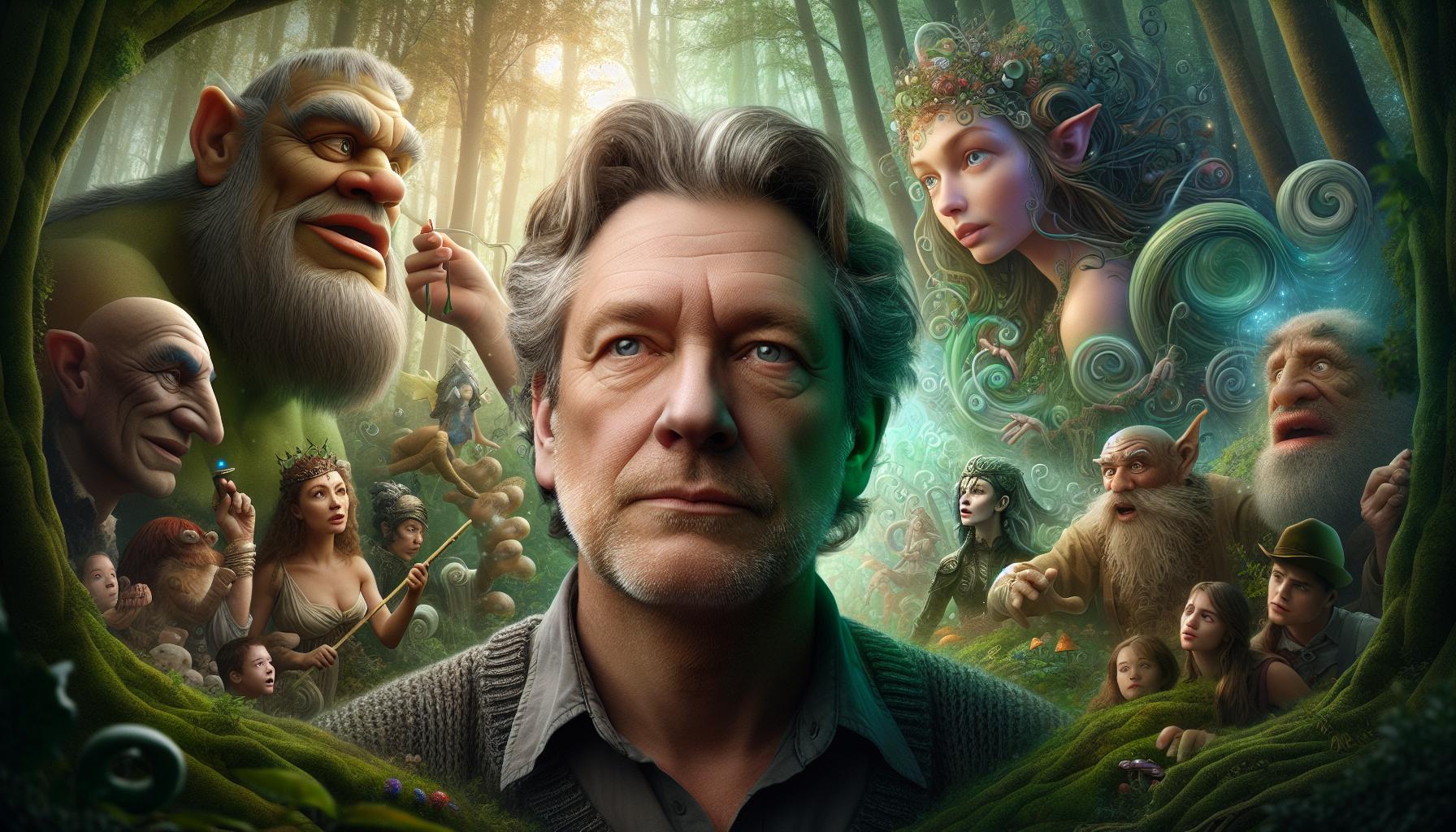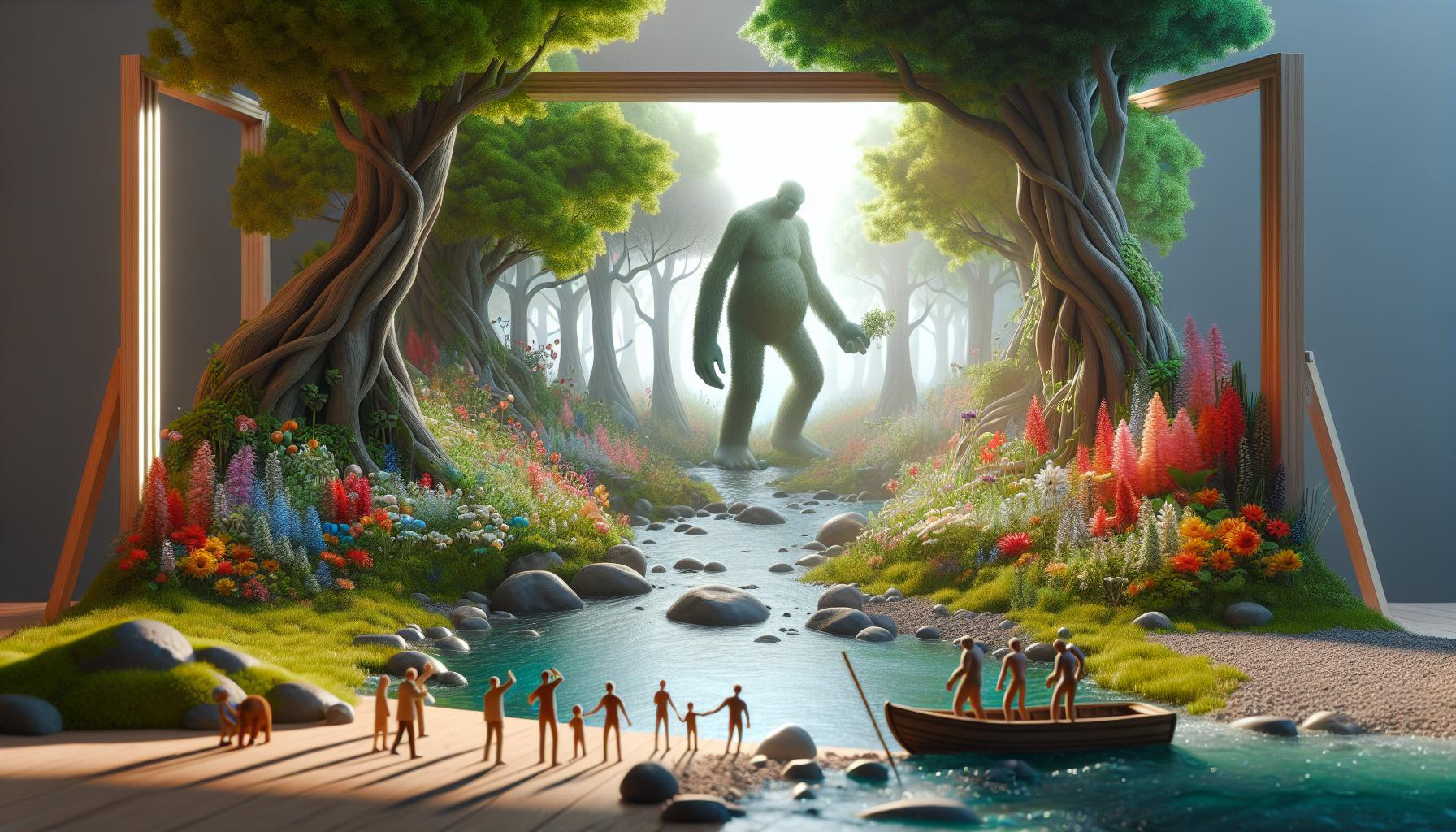Key Takeaways
- Exploration of Storytelling: “Big Fish” highlights storytelling as a significant tool for connection and self-discovery, blurring the boundaries between fact and fantasy.
- Father-Son Dynamics: The film delves into the complexities of father-son relationships, showcasing how Edward’s imaginative narratives create both a bridge and a chasm between him and Will.
- Character Depth: Edward Bloom and Will Bloom represent contrasting approaches to reality and imagination, embodying the theme of seeking truth amidst fantastical tales.
- Cinematic Techniques: Tim Burton utilizes vibrant visuals and symbolism to enhance the narrative, emphasizing the emotional resonance and thematic depth of Edward’s stories.
- Critical Acclaim: The film received positive reviews for its innovative blend of whimsy and profound themes, establishing its status as a beloved classic.
- Cultural Impact: “Big Fish” continues to influence discussions on storytelling and identity, serving as a case study in the portrayal of familial relationships in cinema.
Tim Burton’s “Big Fish” invites viewers into a whimsical world where storytelling blurs the lines between reality and fantasy. The film, released in 2003, follows Edward Bloom, a man whose larger-than-life tales captivate everyone around him. Through a rich tapestry of vibrant characters and enchanting narratives, it explores themes of love, loss, and the complexity of father-son relationships.
As the story unfolds, audiences are drawn into Bloom’s fantastical adventures, each one a metaphor for deeper truths about life. The film’s unique visual style and poignant storytelling provoke thought about the nature of truth and the power of imagination. Analyzing “Big Fish” reveals not just a cinematic experience but also a profound commentary on how we shape our identities through the stories we tell.
Big Fish Movie
“Big Fish,” directed by Tim Burton in 2003, presents a visually stunning exploration of storytelling. The narrative centers on Edward Bloom, a man who recounts larger-than-life stories from his past. These tales include encounters with a strongman, a mermaid, and a giant, illustrating the blend of reality and fantasy.
The film unfolds through two intermingling timelines: Edward’s fantastical recollections and his son Will’s quest for understanding. This dual perspective showcases the dynamic between vibrant imagination and stark reality. As Edward’s tales captivate listeners, they also reflect deeper emotions and experiences that shape his character.
Themes of love, loss, and the complexity of father-son relationships resonate throughout the movie. Edward’s narratives often serve as a way to bridge the emotional distance between himself and Will. These stories prompt viewers to consider the nature of truth, as they highlight the subjective nature of personal narratives.
“Big Fish” employs a range of vibrant characters and lush settings that underscore its whimsical tone. The cinematography, combined with a heartfelt score, elevates the emotional depth of the film. Each character embodies an aspect of Edward’s journey, reinforcing the idea that everyone’s life is a narrative filled with extraordinary moments.
Through its unique storytelling, “Big Fish” invites audiences to reflect on their own experiences and the tales that define them. The film affirms that personal narratives shape identity, imbuing life with meaning beyond mere facts.
Themes Explored in Big Fish

“Big Fish” delves into various profound themes, particularly focusing on storytelling and family dynamics. The interplay of narrative shapes both individual identities and relationships, serving as a catalyst for deeper understanding.
The Nature of Storytelling
The film portrays storytelling as a powerful tool for connection and understanding. Edward Bloom’s colorful stories not only entertain but also reveal his true self, blurring the lines between fact and fiction. Each tale—whether about a giant or a mermaid—functions as a metaphor for his experiences, emotions, and aspirations. This fantastical approach to life underscores the significance of imagination in crafting personal narratives. Through Will’s journey, the audience witnesses how stories carry emotional weight, influencing perceptions of truth and reality.
Family Dynamics
“Big Fish” intricately examines the complexities of father-son relationships. Edward’s tendency to embellish events creates a chasm of understanding between him and Will. Will’s struggle to reconcile his father’s fantastical tales with his own reality embodies a deeper conflict—seeking authenticity in familial connections. As the narrative unfolds, Will discovers that acceptance lies in embracing both the imagination of Edward’s stories and the reality of their divergent perspectives. This exploration of family dynamics invites viewers to reflect on their relationships and the narratives that shape them.
Character Analysis

“Big Fish” features complex characters whose relationships and stories offer insights into human experiences and emotions. The interplay between fantasy and reality creates a rich narrative that explores their profound connections.
Edward Bloom
Edward Bloom embodies the essence of storytelling. His larger-than-life narratives, populated by eccentric figures like a giant and a mermaid, symbolize his imaginative spirit and desire for connection. Edward’s tales often conceal deeper truths about his life experiences, reflecting his adventurous nature and the longing for acceptance. The exaggeration in his stories serves to bridge the emotional gap with his son, Will. Edward approaches life with a whimsical perspective, viewing challenges as opportunities for creativity. This larger-than-life persona both captivates and frustrates those around him, particularly Will, who seeks a more grounded understanding of his father.
Will Bloom
Will Bloom represents the quest for truth amid chaos. As the son of Edward, he grapples with the contrast between his father’s fantastical stories and his reality. Initially skeptical of Edward’s tales, Will’s journey reveals a deeper appreciation for the importance of imagination in shaping identities. His struggle lies in reconciling his father’s larger-than-life persona with the palpable need for genuine connection. Through his evolving perspective, Will learns to embrace both his father’s fantasies and their shared truth, ultimately fostering a greater understanding of love and acceptance. Will’s character arc frames the thematic exploration of familial bonds, illustrating the significance of personal narratives in building meaningful relationships.
Cinematic Techniques

“Big Fish” showcases an array of cinematic techniques that enhance its narrative depth and emotional resonance. The film’s visual storytelling encapsulates the essence of Edward Bloom’s whimsical tales, creating a captivating experience for viewers.
Visual Storytelling
Visual storytelling plays a crucial role in “Big Fish,” as Tim Burton employs imaginative imagery to convey emotions and themes. The juxtaposition of vibrant fantastical sequences with the earthy tones of reality exemplifies contrasting perspectives. Cinematic techniques such as wide-angle shots and sweeping camera movements invite viewers into Edward’s larger-than-life adventures. Iconic scenes, like the giant’s playful interactions, charm audiences while symbolizing the broader themes of wonder and escapism. The use of surreal visuals not only captures the audience’s attention but also serves as a metaphor for the complexities of memory and identity.
Use of Color and Symbolism
The film’s color palette offers profound insights into its narrative. Bright, vivid hues in Edward’s stories signify imagination, joy, and the richness of life experiences. In contrast, muted tones in Will’s reality reflect his struggle and uncertainty. Specific colors often symbolize pivotal themes; for instance, the recurring motif of gold represents nostalgia and the value of cherished memories. Symbolic elements, such as the river and the forest, further deepen the narrative. The river possibly represents the flow of time and life’s transitions, while the forest embodies the unknown journey of self-discovery. Together, these visual and symbolic techniques amplify the film’s exploration of truth, storytelling, and familial bonds.
Critical Reception and Impact
“Big Fish” received critical acclaim for its innovative storytelling and visual style. It holds a 61% rating on Rotten Tomatoes, indicating a generally favorable consensus among critics. Reviewers praised its emotional depth and imaginative narrative, highlighting Tim Burton’s ability to blend whimsical elements with poignant themes. Roger Ebert, a prominent film critic, described the film as “a fairy tale for grown-ups,” underscoring its dual appeal to both younger and older audiences.
Audience reception further supports the film’s impact. Viewers appreciated its heartfelt exploration of father-son relationships, resonating with those who grapple with family dynamics. The film’s memorable imagery and enchanting characters fostered a lasting connection, prompting discussions about the nature of truth and storytelling. Its cult status continues to grow, with fans celebrating its thematic richness and artistic merits.
The film’s impact extends to scholarly discussions, encouraging analysis of its narrative structure and character development. Academics frequently reference “Big Fish” in studies of how cinema portrays familial relationships and imagination. The film serves as a case study for analyzing the blending of fantasy and reality, influencing subsequent works that explore similar themes.
Overall, “Big Fish” remains a significant entry in Burton’s filmography, cultivating a legacy that emphasizes the transformative power of storytelling and its role in shaping personal identities.
Power Of Storytelling
“Big Fish” stands as a testament to the power of storytelling in shaping identities and relationships. Through Edward Bloom’s whimsical tales and Will’s quest for understanding, the film masterfully intertwines fantasy and reality. It invites viewers to reflect on the emotional truths hidden within exaggerated narratives while highlighting the complexities of father-son dynamics.
The vibrant visuals and heartfelt score enhance the film’s exploration of love, loss, and acceptance, leaving a lasting impression on its audience. As a significant work in Tim Burton’s filmography, “Big Fish” continues to inspire discussions about the transformative nature of imagination and the deep connections forged through personal narratives.


 Staying updated in web development is vital due to rapid technological advancements. Accessing up-to-date information enhances developers’ knowledge and skills. Regularly reading blogs helps developers discover new frameworks, libraries, and tools that improve efficiency and productivity. Engaging with industry experts through blogs fosters a deeper understanding of best practices, ultimately leading to better coding practices and innovative solutions.
Staying updated in web development is vital due to rapid technological advancements. Accessing up-to-date information enhances developers’ knowledge and skills. Regularly reading blogs helps developers discover new frameworks, libraries, and tools that improve efficiency and productivity. Engaging with industry experts through blogs fosters a deeper understanding of best practices, ultimately leading to better coding practices and innovative solutions. Front-end development blogs concentrate on user interface and user experience aspects. These blogs cover topics such as HTML, CSS, JavaScript, and frameworks like React and Vue. They provide tutorials, design resources, and industry insights that help developers create visually appealing and interactive websites. Popular front-end development blogs include CSS-Tricks, Smashing Magazine, and Codrops, each offering tips on optimizing performance and enhancing aesthetics
Front-end development blogs concentrate on user interface and user experience aspects. These blogs cover topics such as HTML, CSS, JavaScript, and frameworks like React and Vue. They provide tutorials, design resources, and industry insights that help developers create visually appealing and interactive websites. Popular front-end development blogs include CSS-Tricks, Smashing Magazine, and Codrops, each offering tips on optimizing performance and enhancing aesthetics